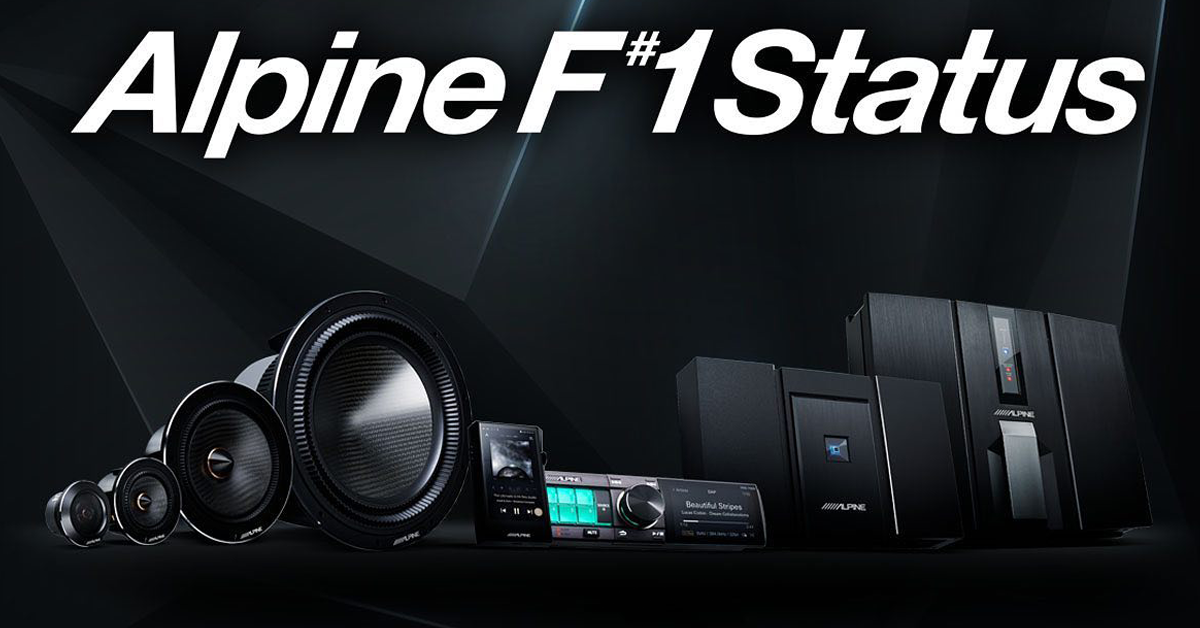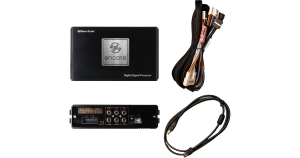Description
The long-awaited 3rd Generation Alpine F#1 Status System is here
providing a total commitment to the highest audiophile sound quality

By maintaining the details produced in a recording studio,
the Alpine F#1 Status system package delivers music just as the artist
intended resulting in the excitement of a live music
performance.





The First Full-Spec High-Resolution Sound System Digital recording continues to progress towards higher Bit and sampling rates. Alpine F#1 Status System Package was designed as the first complete vehicle sound system capable of not only reproducing this full-spec High-Resolution sound but doing so in the difficult environment that the inside of a vehicle presents.
for the Vehicle
While some recording studios record as high as 384kHz/32Bit, the convenience of lower-resolution files with sampling rates of 44.1khz/16Bit found in CDs or highly compressed music from streaming services has become widely accepted as “good enough.” However, much of the original content is lost when playing music at these lower sampling rates than originally recorded. High-Resolution audio was created to address the listener’s desire to enjoy music as the artist originally intended.

The Technology behind Perfect Synchronization

Unlike a home audio system, a vehicle’s audio system requires separated components such as the head unit and audio processor due to the limited space found in vehicle dashboards. Additionally, speakers are forced into suboptimal locations due to a lack of free space in front of the listener and the design of the cabin. The vehicle environment also creates acoustic challenges, like reflection and absorption of sound, road noise, vehicle vibration, and temperature changes that must be overcome to achieve an ideal listening space. AlpineF#1Status incorporates “Perfect Synchronization” technology that solves these installation challenges to reproduce High-Resolution sound and create an ideal listening space in the vehicle.

-

Perfecting Digital Signal Timing
with the Master Clock Management SystemEach device that traditionally handles a digital signal is processed by an independent clock. That controls the signals and timing of each component. However, having several clocks can cause slight signal misalignments called “jitter” that occur during the Digital to Analog conversion. This results in subtle distortions and inevitably the loss of musical detail over time. To recapture these details and achieve High-Resolution audio playback at the highest specification (384kHz/32Bits), the problem of jitter had to be addressed. Alpine developed the Master Clock Management System, which uses a centralized, highly accurate “master clock” that completely synchronizes the audio signal between the head unit and the audio processor, virtually eliminating all jitter during the transmission. AlpineF#1Status is proud to be the first complete car audio system that utilizes this architecture.
OCXO DuCULoN® Crystal Oscillator*1
Regulating the Master Clock Management System are two crystal oscillators called OCXO DuCULoN®. For High-Resolution and high-accuracy audio playback. System clocks are traditionally made from crystal quartz. Whose performance and accuracy are susceptible to the dramatic temperature changes common in the vehicle environment. The OCXO DuCULoN® crystal oscillator is housed in an insulated and temperature controlled case. Located in the audio processor. To address this temperature change and maintain the integrity of the system!
Once the sound system is turned on, the internal temperature of the crystal is adjusted until it is stabilized at the appropriate level needed for master clock accuracy, which is indicated by a light. Housing the OCXO DuCULoN® crystal oscillator in a secured case not only allows for temperature change but can also reduce external noise that can impact the integrity of the sound. The master clock can be stabilised at an accuracy that is 500 times that of crystal quartz used in standard digital products. The Alpine F#1 Status master clock operates at the highest accuracy in the industry.

Four High-End DSPs Optimize
the Speaker System
In traditional car audio systems, the distance of the driver’s seat from each speaker is asymmetrical. Due to limited speaker installation locations. The discrepancy between the distance of the listener’s seat and the speaker positions cause the sound to arrive at the listener’s ears at different times. As a result, the sound characteristics, can become distorted and diverge from the artist's original intention. Unlike a home audio system, it is difficult, to position car audio speakers for an optimal listening environment. Therefore, a car audio system must feature precision tuning capabilities to ensure High-Resolution playback.
Tailored high accuracy sound tuning for a vehicle’s interior environment can achieve accurate phasing (synchronisation). Providing a three-dimension stereo experience and create a balanced frequency range that’s faithful to the original recording. Essentially emulating a live performance. Alpine F#1 Status System Package is equipped with four of the industry’s highest-spec digital sound processors (DSP). Running at up to 1GHz/64Bit, with the processing power of a high-end computer’s central processing unit (CPU). Achieving accurate sound tuning for High-Resolution audio playback at 384kHz/32Bit. The results are “Perfect Synchronization” and music that says faithful to the artist's original intentions.


Unifying Speaker Tones with
Carbon-Fiber Reinforced Plastics (CFRP)
Conventional car audio speakers are created with optimised materials and a structure suited to the specific frequency range. However, due to these differences, the characteristics and tone differ from speaker to speaker. Instruments and vocals that have wider frequency ranges have subtle changes when they are played with multiple speakers. To unify the tones of the speakers, Alpine F#1 Status combined the designs by using a single material. Called Carbon-Fiber Reinforced Plastics (CFRP). CFRP is a lightweight, yet highly rigid material that is five to six times stronger than steel. Plus three to four times stronger than aluminium of the same mass. More often used in aerospace and professional video equipment, CFRP now serves as the cone material in AlpineF#1Status speakers. Because of its structure, CFRP is the optimal choice for High-Resolution audio playback.


Operational amplifiers are critical in the analog output circuits of audio processors. Since they provide the feedback that continually corrects and improves the signal quality. Alpine has unique expertise in operational amplifier circuit design, created by years of amplifier evolution. Our design is based on the MUSE05 op amp, used for the first time in an automotive application. Alpine closely monitors the sound quality changes caused by minute current variations in the internal circuit. Along with the influence of harmonic waves in the audio bandwidth of several MHz. Then, they enhanced the signal processing purity by upgrading the industry-standard two circuits chip, to a unified single-circuit chip. This allows complete isolation of the internal amplifier stages, eliminating interference between the stages.*2




























































Reviews
There are no reviews yet.